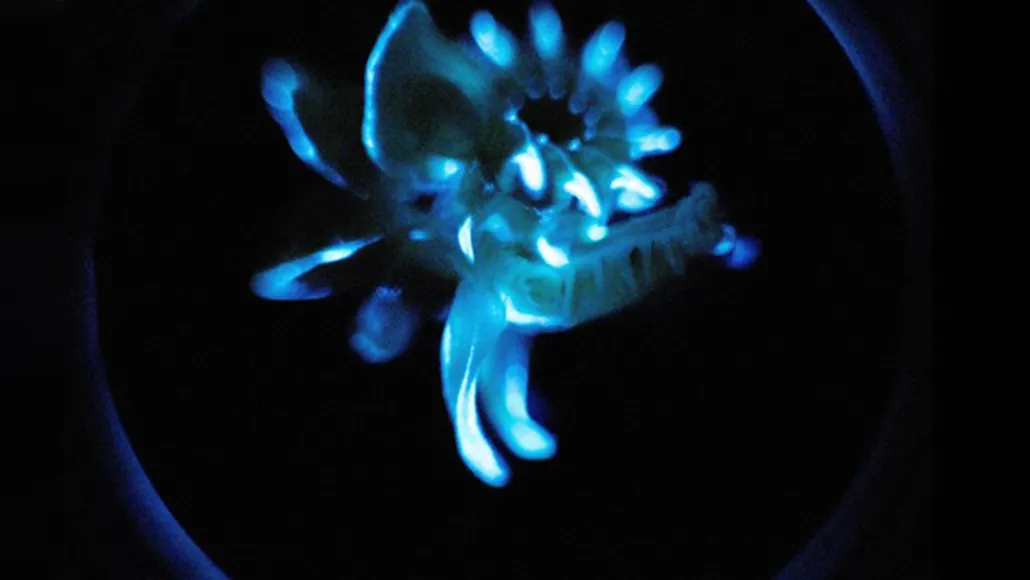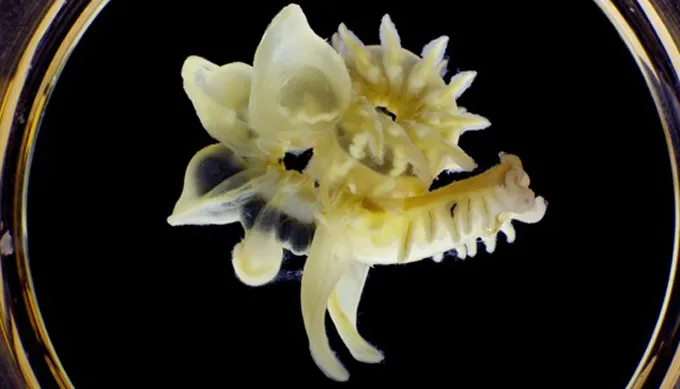
When threatened, marine parchment tube worms exude a sticky mucus that glows blue in the dark.
David Liittschwager
- More than 2 years ago
Read another version of this article at Science News Explores
Predators that tread on a colony of parchment tube worms may find themselves slimed. When threatened, these ocean creatures exude a sticky mucus that can glow blue for days (SN: 7/28/14).
This sort of light produced by animals, bacteria or algae typically is gone in a flash (SN: 6/12/16). But with the mucus oozed by Chaetopterus tube worms, “we have easily 16 hours and sometimes 72 hours of light,” says Evelien De Meulenaere, a biochemist at the Scripps Institution of Oceanography in La Jolla, Calif. New results suggest that the slime’s own light may help it shine on by triggering chemical reactions that sustain the glow.
Making and sustaining such bioluminescence requires energy. But the slime’s power source is a mystery since it glows outside the body, where it can’t draw energy from the worms. So to unlock its secrets, scientists are dissecting the goo’s complicated chemistry.

De Meulenaere and her colleagues noticed a spike in the mucus’s light when they exposed the slime to blue light. “That’s the weirdest thing,” she says. “The mucus produces blue light itself. So is it powering itself?”
To find out, the researchers separated molecules from the mucus based on size and other properties to identify proteins, sugars and metals. This process of untangling the slime’s recipe revealed that iron may contribute to the enduring glow. The mucus contains ferritin, a protein that stores iron and releases electrically charged iron atoms, or ions. Those ions can trigger the mucus to emit bursts of blue light, the team found.
The ferritin itself seems to respond to blue light, with the help of another blue light–absorbing molecule, by releasing the ions more quickly, De Meulenaere and her team found. That suggests that light from the slime may help trigger more light production to sustain the glow. The team planned to present the results in early April at Experimental Biology 2020, but the meeting was canceled due to the COVID-19 pandemic.
Sign up for our newsletter
We summarize the week's scientific breakthroughs every Thursday.
The goo’s glow was first investigated in the 1960s, and then was essentially forgotten, says biologist Warren Francis at the University of Southern Denmark in Odense, who was not involved with the study. The new research is shedding light on the slime’s enduring shine, but the data don’t yet paint a clear picture of the roles of blue light and ferritin in the glow’s chemistry, he says.
“Understanding how it works gives us a big clue to how these animals function in their own world,” Francis says. And it could help humans too. The bioluminescence of jellyfish and fireflies have provided powerful tools that help biologists study the workings of cells. “There’s potentially huge numbers of applications,” he says.
Perhaps someday, the study authors suggest, scientists could use the snot’s secrets to create a long-lasting light that glows on and on.






